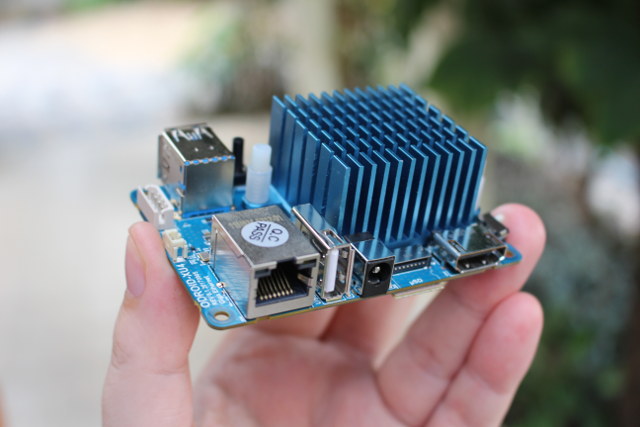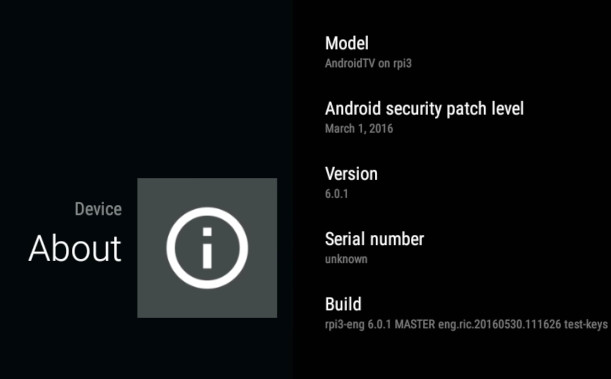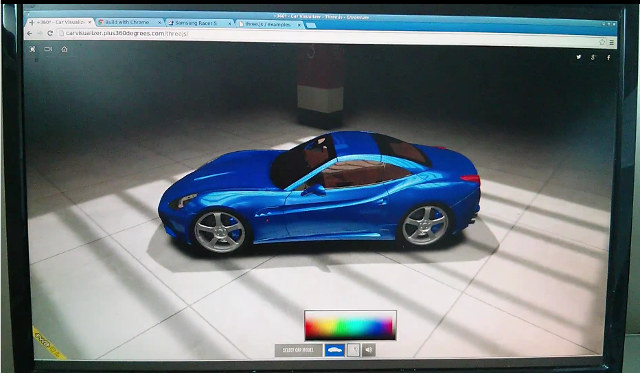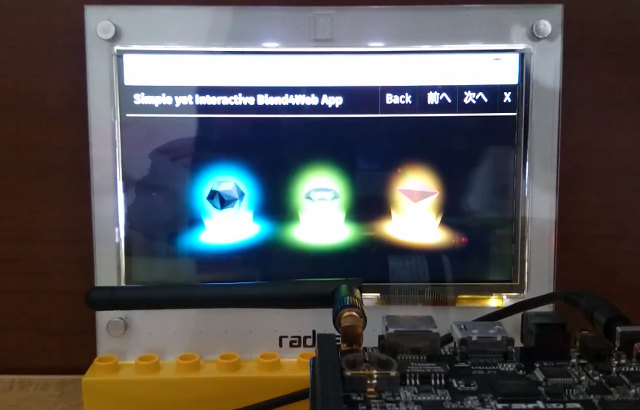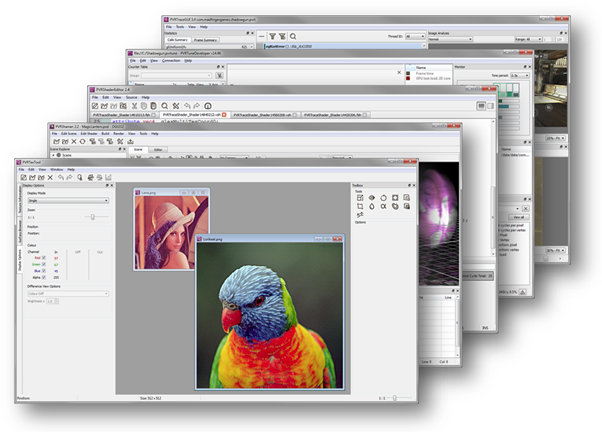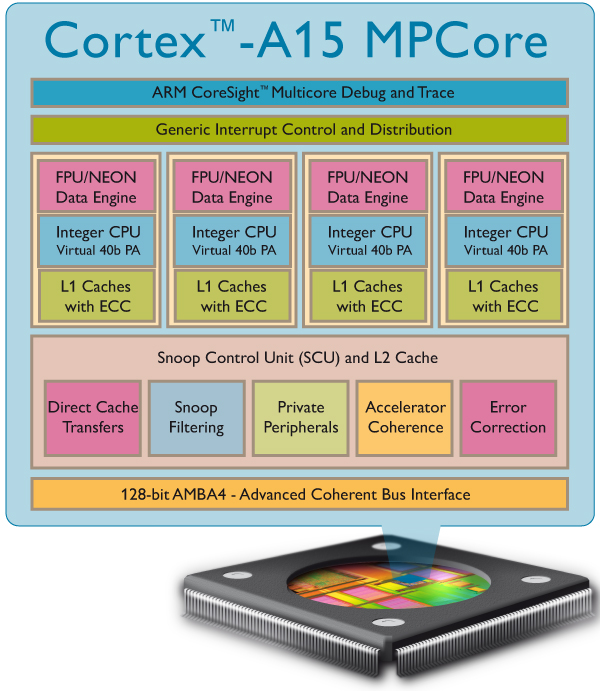Hardkernel released their first Samsung Exynos 5422 octa-core board in July 2014 with ODROID-XU3, which at the time was really a powerful board, but also pricey at $179. Later that year, the company released a cheaper version ($99) called ODROID-XU3 Lite, which I had the chance to review with Ubuntu 14.04 and Android 4.4. The company’s adventure with Exynos 5422 processor did not stop there, as in 2015 they released the smaller and even cheaper ($74) ODROID-XU4 board, and last year launched a fanless version of the board with ODROID-XU4Q featuring a large heatsink. More recently, the company also introduced ODROID-HC1 and ODROID-MC1 solutions for respectively network storage and clusters applications. That’s the short history of Hardkernel Exynos 5422 boards as I remember it, and that means that since 2014, or nearly 4 years so far, the company has kept updating Ubuntu and Android firmware for their board, including the […]
WebAssembly is a Cross-Platform, Cross-Browser Solution for High Performance Code in Web Browsers
Most code running in a web browser runs much slower than native code (C/C++/ assembly), and it’s fine for many applications, but some others requiring higher performance like software video decoding would have to relies on native code, initially provided via browser plugins, but then Google introduced PNaCL (Portable Native Client) allowing to run native code on multiple targets (ARM, Intel, etc..) but in Chrome browser only, and now one of Chrome developers has explained that the community has moved to WebAssembly. WebAssembly works just as well as PNaCl, and is already natively supported by Chrome and Firefox, with support added to preview versions of Microsoft Edge and Apple Safari browsers.Since it works just as well as PNaCL, and adoption of the later is low enough, Google decided to drop support for PNaCl in the Chrome browser in Q1 2018, except inside Chrome Apps and Extensions. To get a feel […]
Android TV 6.0 Ported to Raspberry Pi 3 with 2D/3D GPU Acceleration, but no Hardware Video Decoding (Yet)
Google might be working on Android or Brillo for Raspberry Pi 3, with a new repository created in AOSP, meaning that, if that’s Android, you won’t probably get the Google Mobiles Services by default, but those can be side-loaded to get access the the Play Store, Youtube, etc… In the meantime, a group of developer have been working Android 6.0 TV port for Raspberry Pi 3. That’s the same team who worked on previous images for Raspberry Pi and Raspberry Pi 2 boards using “peyo” port, and that did not have any support for 2D/3D graphics acceleration, nor hardware video decoding. But they’ve made some improvements for their Android TV 6.0.1 release for Raspberry Pi 3, as 2D/3D GPU acceleration is enabled using the Mesa drivers, and Kodi user interface, game emulators, WelGL in Chrome browser all work relatively well using 1280×720 frame buffer resolution as you can see from […]
Linux 3D GPU Acceleration Demo on Rockchip RK3288 based Firefly Board
Several devices and development boards based on Rockchip RK3288 processor already support Linux, usually with images based on Ubuntu, including Ugoos UM3 / UT3, Open Hour Chameleon, and Firefly-RK3288 among others. What these images lack however, is support for 2D and 3D graphics acceleration with the GPU, and hardware video decoding/encoding with the VPU. But Jas-hacks has made some progress with 3D graphics support. He has managed to add GPU acceleration via EGL/OpenGL ES bringing 3D acceleration to the platform, but 2D support is not there yet, meaning X11 still heavily relies on software rendering. But the implementation is still good enough to run the usual es2gears and glmark2-es2 benchmarks. as well as some WebGL demos in Chromium. Performance is currently underwhelming, with 50 points in glmark-es2, even a bit lower than the score (54 points) I got with ODROID-X board powered by Exynos 4412 SoC with a Mali-400MP4 GPU, […]
WebGL Demos in Radxa Rock Pro Board Running Firefox OS 2.1
Radxa Rock Pro is a development board powered by Rockchip RK3188 quad core Cortex A9 processor, and although 2D/3D graphics acceleration via Mali-400MP4 is shown to be possible in Linux with tools like es2gears and glmark2-es2, full integration is seldom worked on, and things like WebGL may not work in web browsers. But thanks to the work of naobsd and MatchStick team, Firefox OS has been ported to this Rockchip development board, and as you’ll see in the video below, some WebGL demos work amazingly well. The hardware setup for this demo is comprised of Radxa Rock Pro development board, a 7″ LCD display with touchscreen, and some lego bricks :). WebGL demos can be found @ https://developer.mozilla.org/ja/demos/tag/tech:webgl, so you could try your own platform to see how it performs. If you own a Radxa Board Pro (or Lite), you can even build Firefox OS by yourself by following the […]
PowerVR SDK v3.4 Supports WebGL, 64-Bit Android 5.0 Lollipop, and MIPS Linux
Imagination Technolgies has just released PowerVR SDK v3.4 including the latest compilers for PowerVR Series6 and Series6XT GPUs to PVRShaderEditor, several performance optimization, a new WebGL SDK, 64-bit support for Android 5.0 Lollipop, and Linux support for MIPS based processors. The company has revamped the user interfaces of their tools, and made the following key changes: PVRTrace, a tool to capture and analyze OpenGL ES and EGL API calls, now supports OpenGL ES 3.1, compressed trace files, and they’ve reduce the software memory usage PVRTune, a performance analysis tool, now features new counters, and “significant” performance optimizations. PVRShaderEditor, a light-weight shader editing too, adds the latest compilers for PowerVR Series6 (FP32 and FP16) and Series6XT GPUs, as well as GLSL disassembler output. PVRTexTool, a utility for compressing textures, adds plugin support for Autodesk 3DSMax and Maya (2015 versions), and improves ETC decompression by up to 20% faster per surface. Imagination also […]
ARM’s Next Generation Processor: Cortex A15 with Mali T-604
This year and next, many products will use processors based on ARM core cortex A8 and A9 tied-up with Mali 400 GPU. Those processors will run between 1 and 2 GHz. Earlier this month, ARM announced their new GPU Mali-T604 that will be used with Cortex A15 @ 1 to 2.5 GHz depending on the target application. The core design is ready, silicon foundries should be able to manufacture chips by the end of 2011 and products should be available for retail end of 2012 / beginning of 2013. ARM and their customer target the following applications for Cortex A15: Advanced Smartphones (1 to 1.5 GHz single or dual-core configurations) Mobile Computing (1 to 1.5 GHz single or dual-core configurations) High-end Digital Home Entertainment (1 to 2 GHz dual-core or quad-core configurations) Wireless Infrastructure (1.5 to 2.5 GHz quad-core, octo-core or larger configurations) Low-power Servers (1.5 to 2.5 GHz quad-core […]


